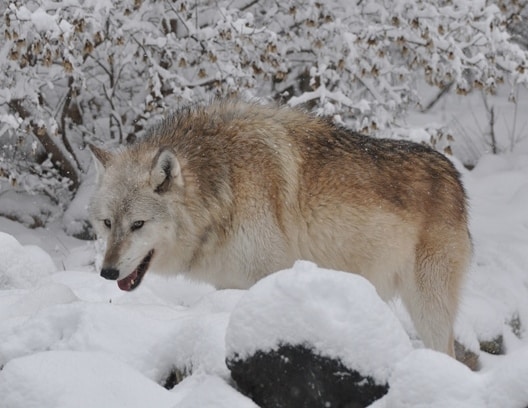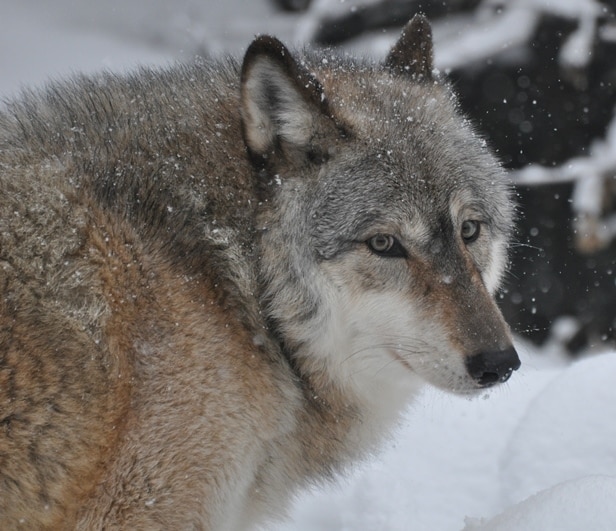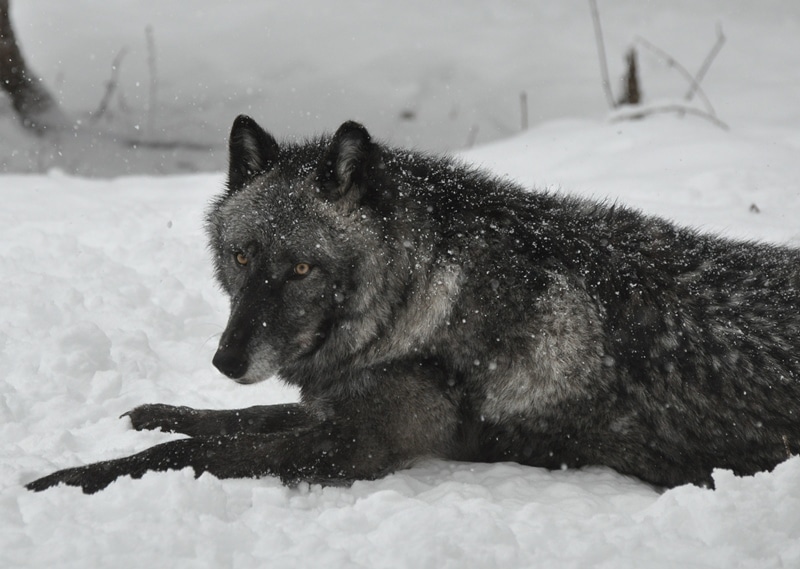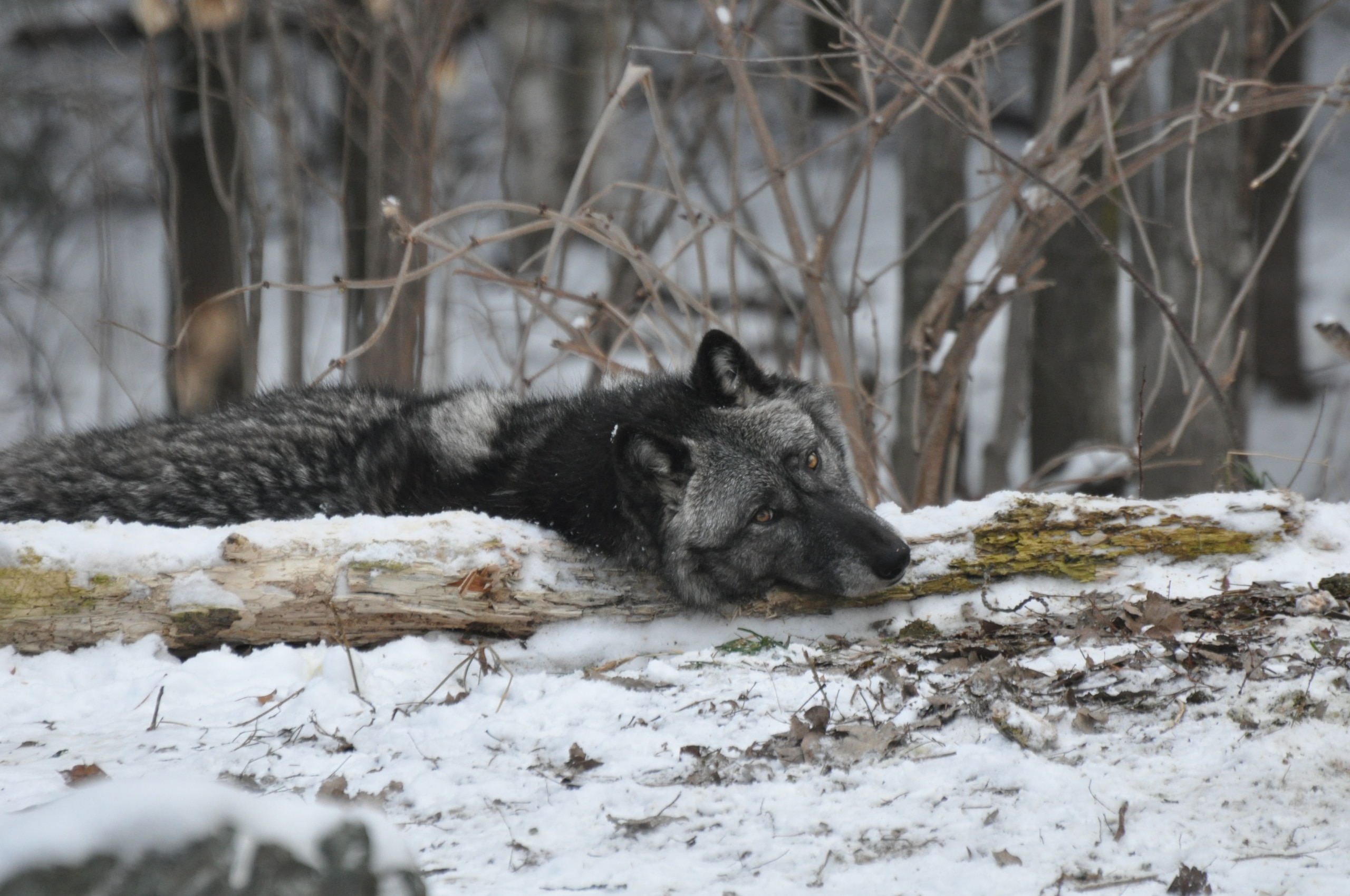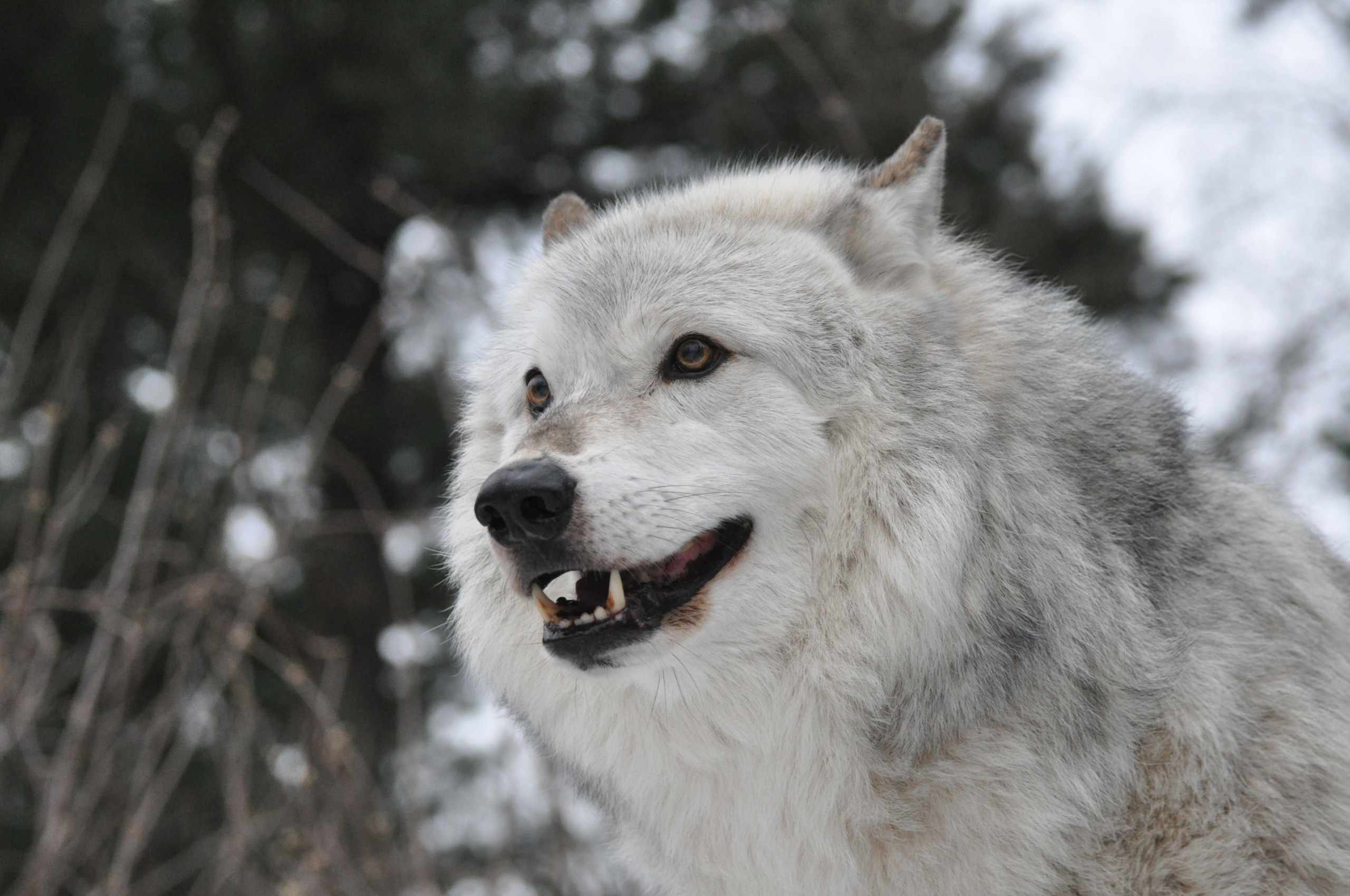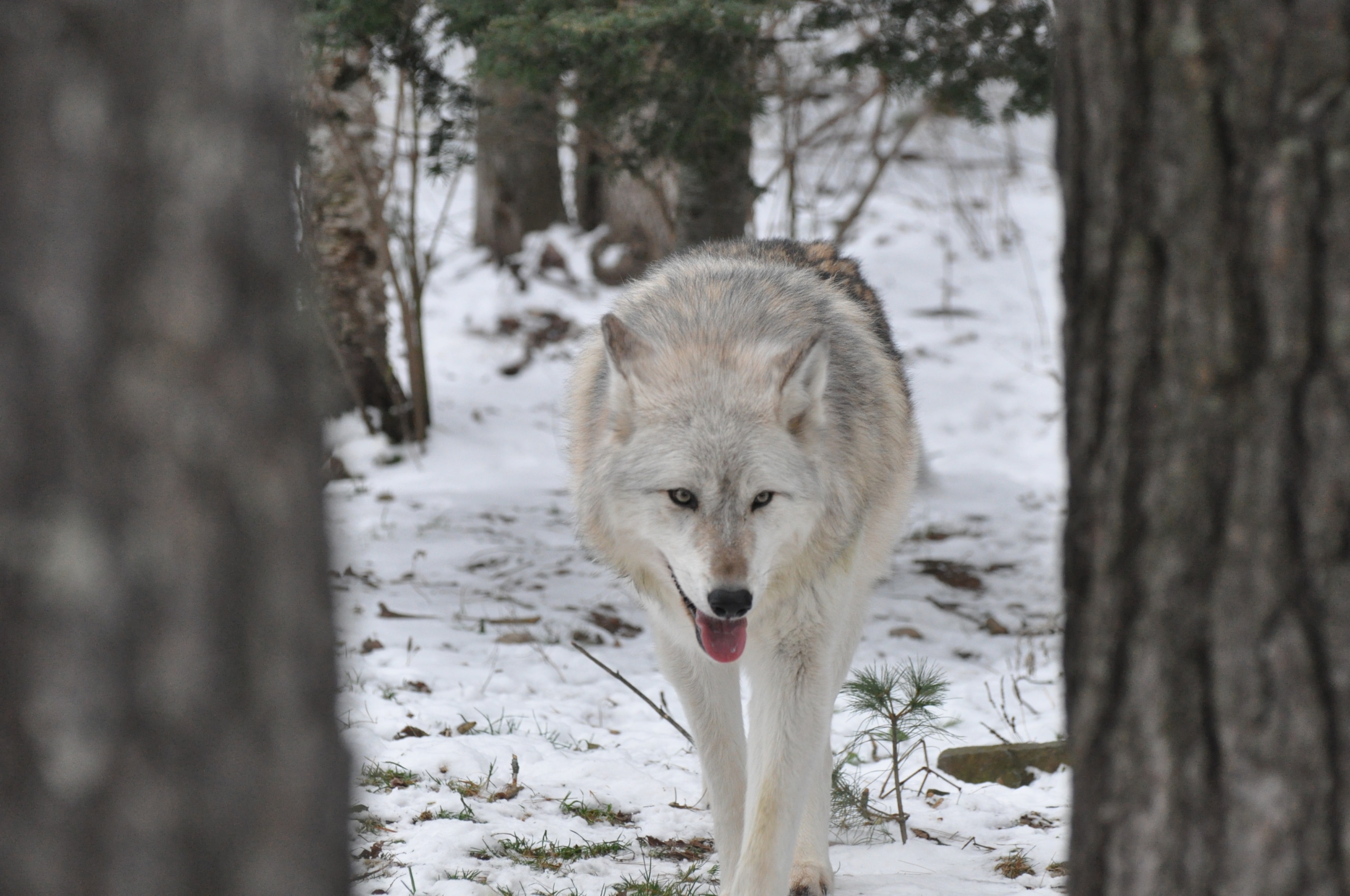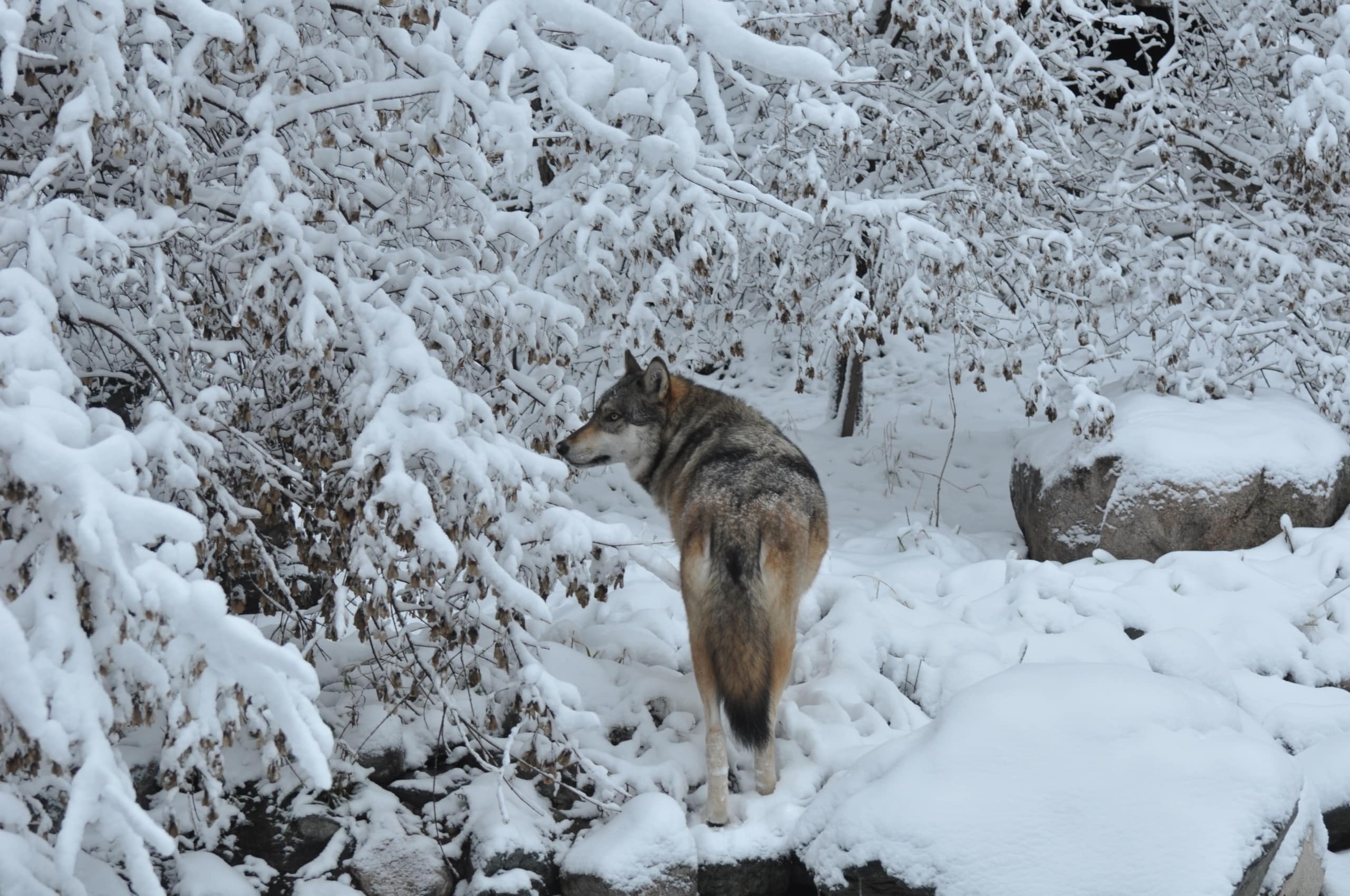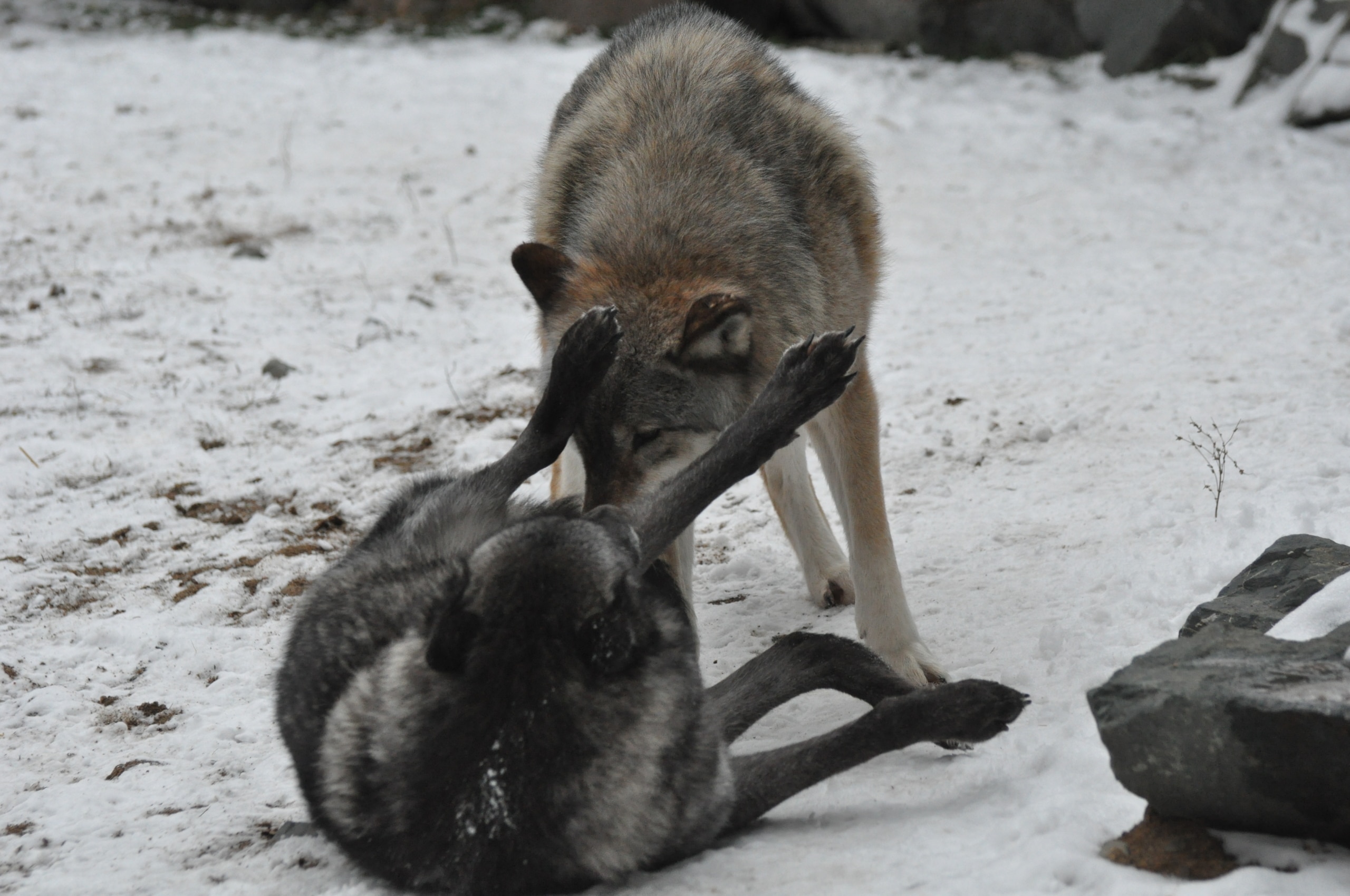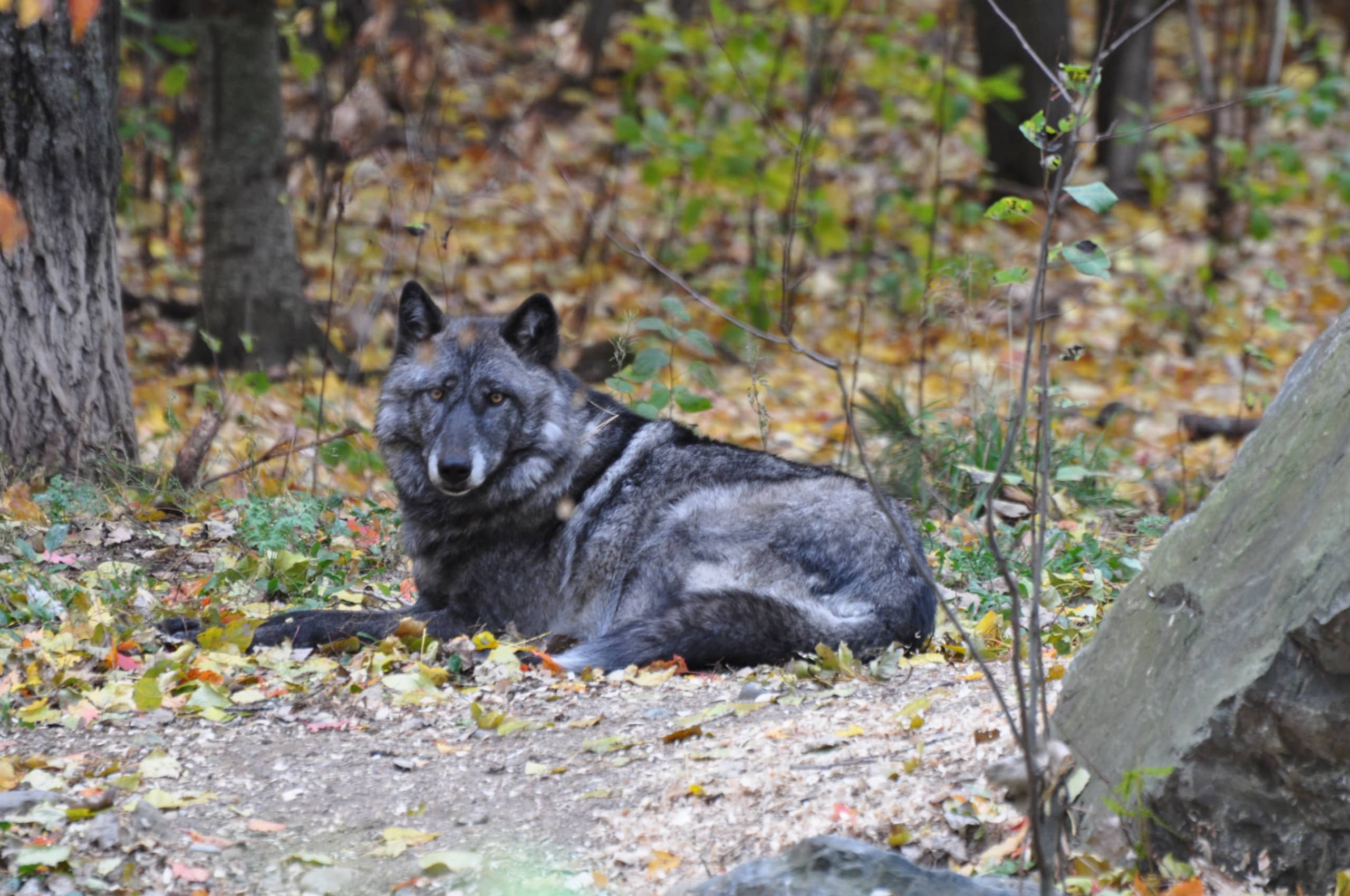Visitors and staff alike comment on the coloration changes of our older wolves, particularly Denali. He is definitely changing with age physically, his facial coloration is more cream colored than the golden brown of his youth, but this is one wolf that is not changing behaviorally. Denali still displays the youthful, tail-wagging, play-bowing exuberance reminiscent of his youth. Certainly, individual personality traits can dictate wolf behavior, but it is interesting to investigate behavioral correlations to rank status. Aidan as a dominant pack leader tends to be more keyed into asserting dominance. Denali, as a lower ranking pack member, tends to display a more social response to pack activities.
Archives
Biologists will often describe wolves as opportunistic carnivores. This generally relates to their hunting behavior, rather than fitting into a defined prey selection method, wolves tend to look for opportunities for the easiest prey. In captivity, where hunting for prey is restricted to the stray squirrel or songbird, there seems to be some transfer of predatory behaviors to fellow pack members. This can start out as social behavior, stalking and ambushing another pack member, leading to a chase around the enclosure with tails wagging. In the case of some dominance behavior, this can also be observed with younger wolves, watching an older pack leader for vulnerability. We typically see this when our dominant pack leaders are between 8 – 10 years of age, and our subordinate pack members are in the 2 – 4 year range. As we enter the year 2016, we have entered the time where older wolves have weaknesses and opportunistic young adults are quick to respond. As we look at Boltz’s gaze and head posture, it suggests a wolf looking for opportunities.
A wolf in the wild may be considered old at eight years of age. In captivity, a wolf may be considered middle age considering a captive lifespan of 15 – 18 years of age. As a pack leader, Aidan seems to be aging more than his litter mate Denali who is a lower ranking wolf. As the pack leader, Aidan is often showing more activity when maintaining his dominance, responding to external stimuli, whether they be human or animal visitors outside the perimeter fence and guarding food from the scavengers that frequent the exhibit. There have been several studies in both wild and captive wolf projects assessing the level of stress in individuals based on their social rank hierarchy. These studies assess the level of fecal cortisol, a hormone produced by the adrenal gland. People often think that the lower ranking wolves may carry more stress because they are being dominated through hard muzzle bites or being pinned to the ground, but actually, some studies have shown more dominant wolves with higher cortisol levels. This is no surprise to our wolf care staff, we see how hard Aidan works to keep this Exhibit Pack in line.
A wolf’s guard hairs may range in color from white to black and there seems to be some patterns based on geographic location. Luna’s dark coloration is easy to spot in a snowy landscape, but arctic wolves with their light colored guard hairs certainly blend in with their environment. As part of the Center’s wolf management plan, we are scheduled to introduce pups into the Exhibit Pack this summer. Our tentative plans include the addition of arctic subspecies to allow visitors and web viewers the opportunity to see the physical adaptions characteristic of wolves from a variety of geographic regions.
Luna has shown us time and again that she is the instigator of many interactions in the pack. But she has her calm moments as well. Today she greeted staff in a much more mild manner, though excitable, she was more gentle than usual, which was refreshing to staff members. The new hay beds will be added in quantity after we get our next batch of snow, forecasted for the next few days, which Luna is often quick to utilize. For now, she often uses the dens to rest in a warm place, though can often be found using an old tree for a pillow.
We had put straw in the dens for the exhibit pack, and Grizzer a few weeks ago, but we’ve more recently acquired Timothy Hay, which has fewer burrs in it, creating a more comfortable rest for the wolves. This hay was added to the mix in the last few days, and Grizzer seems to be enjoying it. He has his two favorite spots: one on top of his den, and the other under his favorite spruce. These beds provide a warm resting place for the wolves. Though in the wild, wolves do not need these beds due to the insulating snow. In captivity however, snow quickly becomes compact, and loses its insulation value.
In the last month we have completed much of the work on our new filter housing. This cement shelter will allow us to install a UV filter to help kill the algae in the pond when it is running. This will save us a lot of money draining, cleaning, and refilling the pond as we often had to do prior to this filter. Last week we finished bolting in much of the metal roof that rests on top of it, and Denali was quick to give us a good test of it, as seen in this week’s youtube. The new structure in the enclosure appears to be a good stimulus, and is quickly becoming a favorite sleeping spot for the wolves.
Boltz is not quite as socialized as the other wolves on site, and so he tends to be more cautious when approaching staff. Some days he is quick and excitable to greet, other days he tends to shy away. The snow has created quite a bit of excitement, and investigative behavior in all of the wolves, including Boltz.
Though Aidan is the dominant male of the exhibit pack, it does not give him the right to take food from other members of the pack, or to eat first. Food possession is separate from the pack hierarchy, if you possess it, you can guard it from any other member of the pack, even from a more dominant animal. This means that Aidan doesn’t always get on the carcass first. Luna has been known to possess the food in the enclosure for upwards of several days, and so Aidan has come up with some interesting methods in protecting his food from Luna. As we’ve seen in many of our feeding programs now, Aidan is getting into the habit of pulling the deer into the den the following morning, so that he can more easily defend it perhaps. This seems to be quite effective, as he tends to come out with a full belly after.
Autumn provides excellent photographic opportunities with the multitude of colors we see in our landscape as the trees ready for winter. Luna shows this very nicely in this week’s photo. When visiting the International Wolf Center, visitors often get many opportunities to photograph our wolves through our observation windows. Luna seems to be enjoying the weather, but we are mindful of her hip, and have added plenty of straw to the exhibit pack’s enclosure. Should she feel discomfort due to the dampness of the recent days, she can retreat to the den, and a soft, warm straw bed.

The International Wolf Center uses science-based education to teach and inspire the world about wolves, their ecology, and the wolf-human relationship.

